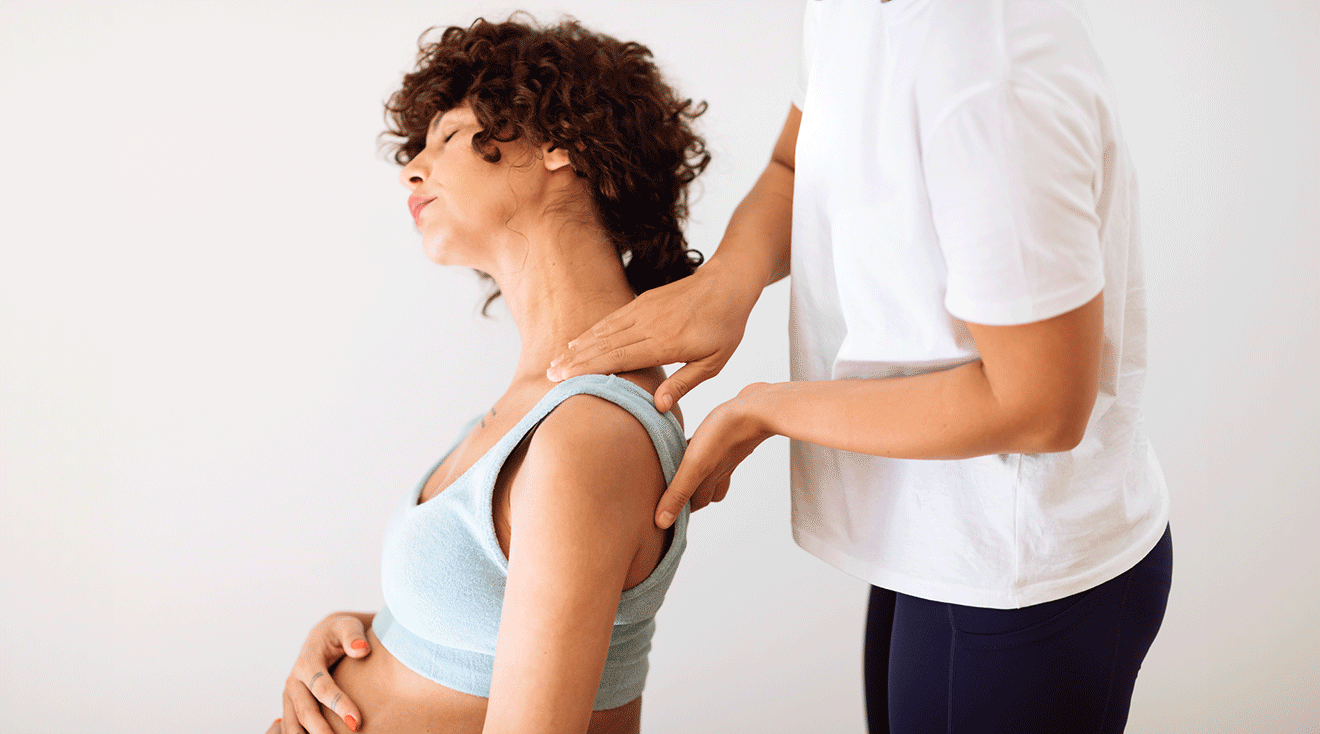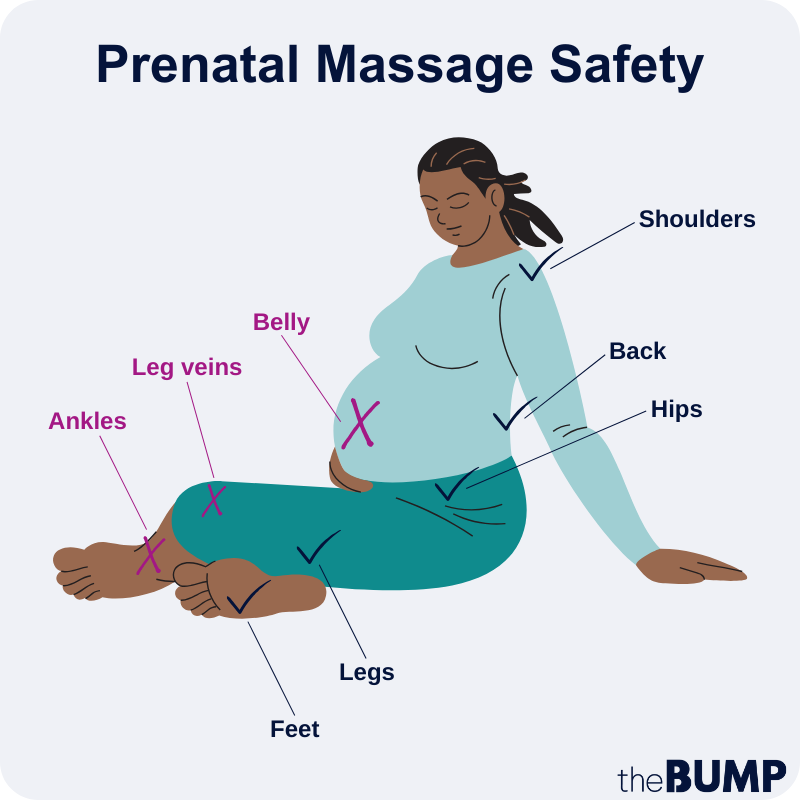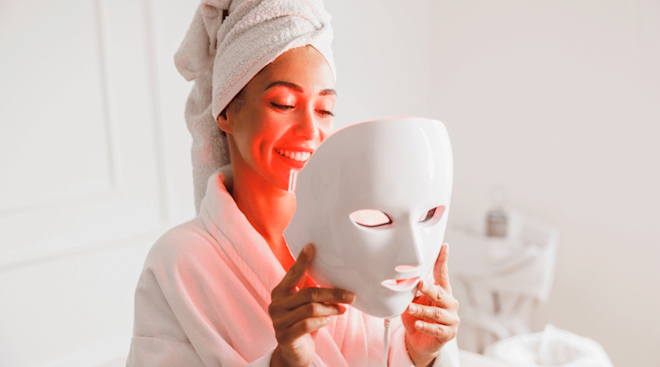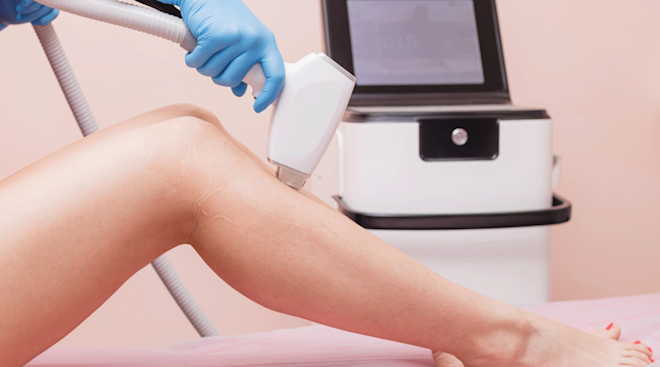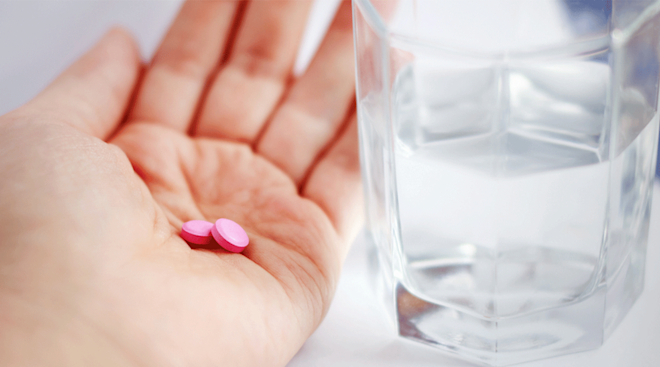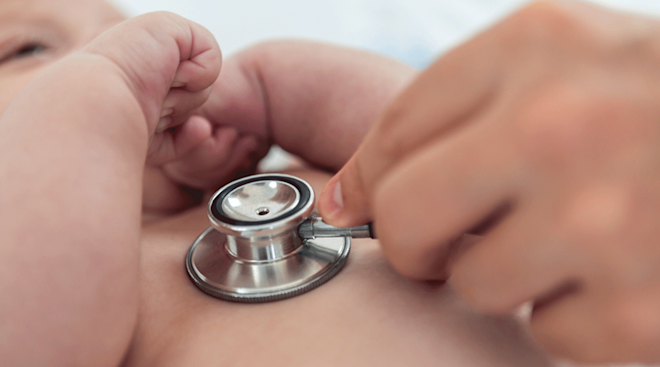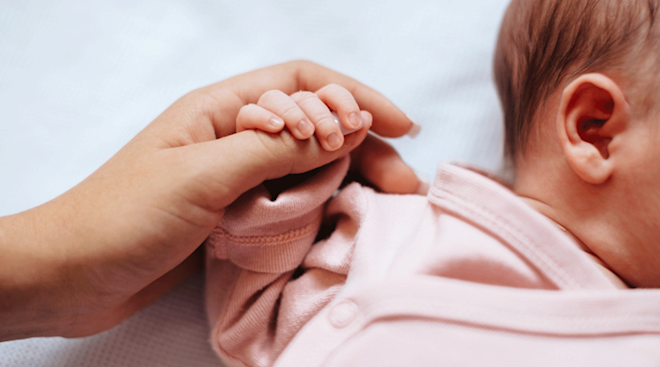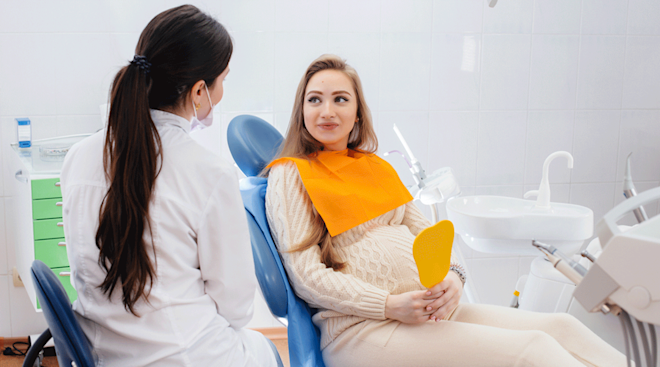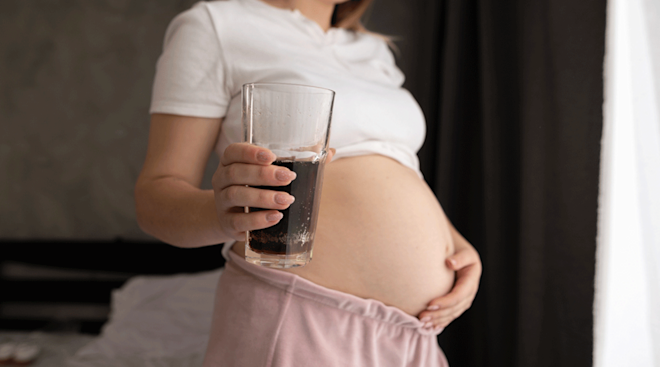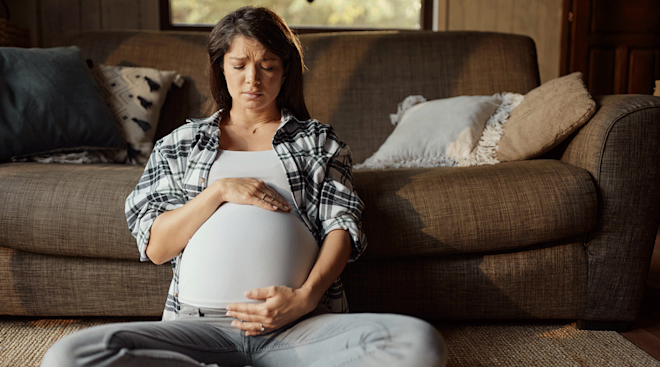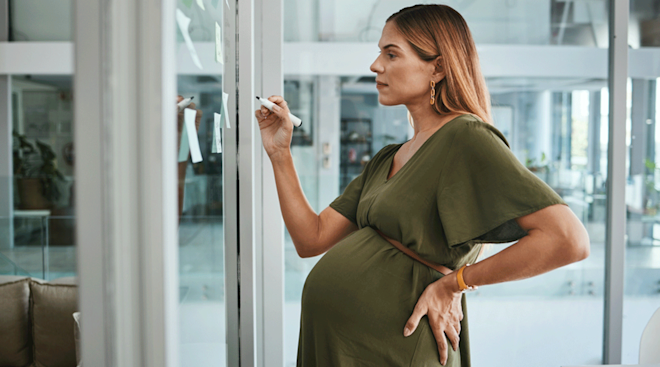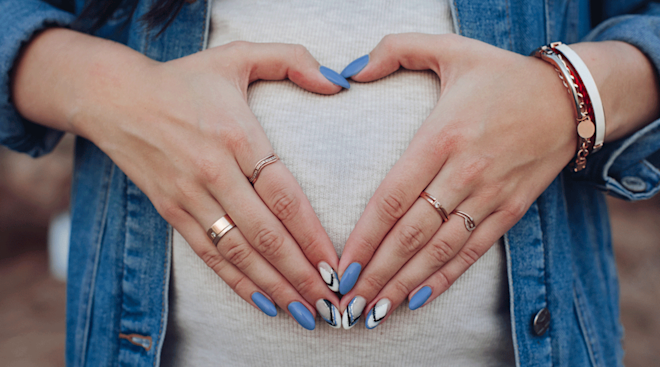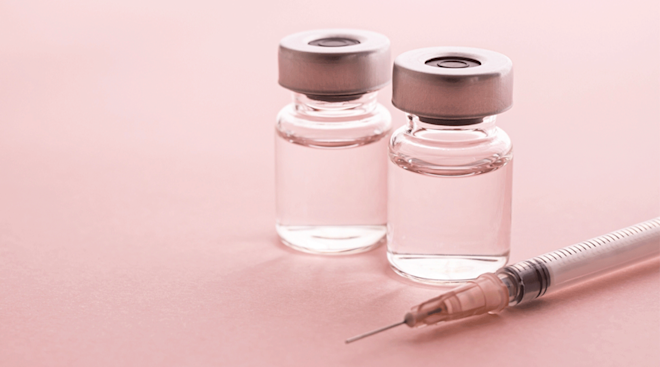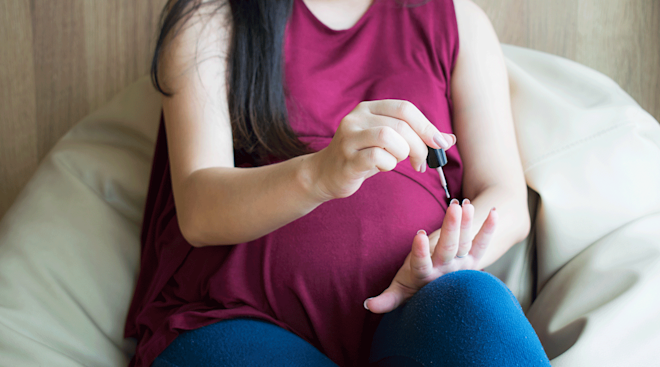How to Safely Enjoy a Prenatal Massage
Pregnancy can certainly prove taxing, both physically and mentally. Your body is tired and sore, and your mind is racing with anxious thoughts—nothing a soothing massage couldn’t cure. But can you get a massage while pregnant? The answer is a resounding yes. When performed properly, prenatal massage has a myriad of benefits for a mom-to-be. Whether you’re looking to book a spa day out, or tasking your partner with this hands-on job, we’ve got you covered. Below, experts share everything you want to know about prenatal massage.
Prenatal massage is more than just a pampering spa service to splurge on for special occasions—it’s actually a type of therapy in integrative medicine. Trained professionals use their hands to apply pressure and movement to different parts of the body to stimulate muscles, ligaments, tendons and skin. A pregnancy massage is tailored to address the tight spots that may be exacerbated by pregnancy, all while prioritizing your safety (and that of baby’s).
“The massage can be transformative, releasing long-held tension with the right pressure and positioning,” says Sara Lyon, a licensed massage therapist and founder of Glow Birth & Body, a prenatal and postpartum massage therapy practice with locations in California, New York and Illinois. “It takes into account the anatomical and endocrine changes impacting the pregnant body. Prenatal hormones like oxytocin and relaxin are optimal for deep relaxation and tissue healing. It’s an opportunity to take advantage of those hormones and elevate the massage experience.”
Most spas offer pregnancy massages (often called “mommy-to-be” massages), but you can also get one at certain clinics and medical centers, or from doulas certified in massage therapy.
The answer to this will likely depend on your individual circumstances. According to Field, you can get a prenatal massage at any point in pregnancy, even early on. In fact, a massage in the first trimester may be particularly helpful if you have morning sickness. While there’s no direct research that links massage to pregnancy-related nausea relief, a study found that a 20-minute massage significantly reduced nausea in breast cancer patients undergoing chemotherapy.
That said, the American Pregnancy Association (APA) notes that some facilities may decline to offer pregnancy massages for moms-to-be who are still in their first trimester. This is due to the increased risk of miscarriage, which is statistically more likely to happen during the first 12 weeks of any pregnancy, and wanting to avoid avoid any liability issues. While research hasn’t found a correlation between prenatal massage in the first trimester and miscarriage, based on your pregnancy, your ob-gyn may not recommend getting them until you’re closer to 23 or 24 weeks to ensure viability.
You might think you’ve missed your opportunity to enjoy a prenatal massage by the time you hit the third trimester (after all, you can barely find a comfortable position, let alone be still for a whole hour). On the contrary, massage can help relax you; it may even work as a preparatory exercise for labor. “Massage allows the pregnant client to practice breathing through physical intensity to release muscles, softening instead of holding against the pain,” says Lyon. “This is also the ideal reaction to contractions. There are very few things you can do to practice that kind of physical and mental surrender.”
A massage may even help you at the onset of labor—just don’t count on it as an alternative to an epidural. While some studies have found that massage at regular intervals throughout the labor can help lower anxiety and pain levels, other research has failed to show the effectiveness of massage in easing labor pain.
So when can you get a prenatal massage? Unfortunately, there isn’t a straightforward answer here—and it’ll likely vary from person to person. Reach out to your provider for advice tailored to your specific situation.
The physical stimulation of massage for pregnant women can ease tightness and discomfort and release tension and stress. But in fact, research shows ample and far-ranging benefits of prenatal massage in addition to working out any old aches, pains and kinks.
- Reduces muscle pain. As baby grows, your body has to account for the changes—and that can cause some discomfort. “The most common request from pregnant guests involves massages that are focused on the lower back, hips, neck and feet,” says Tiffany Delalay, spa director at The Spa at MacArthur in Sonoma, California. “It makes complete sense—those areas can be most impacted by increased weight and swelling that occurs during pregnancy.” Prenatal massage can also help ease neck and shoulder pain, as well as sciatica, a common complaint among moms-to-be, as the pelvis flares open to accommodate the growing baby.
- Bolsters immune function. Staying healthy is all the more important when you’re expecting, but pregnancy naturally lowers your immune defenses. It’s of note, then, that in animal studies, mice that were hand-stroked, as opposed to brush-stroked, had a better immune system response. Research also shows a boost in immunity for chemotherapy and immunodeficiency disorder patients undergoing massage therapies. “Physiologically, massage increases circulation and helps the body flush out toxins via the lymphatic system,” adds Lyon.
- Lowers risk of prenatal depression. Moderate pressure and touch stimulate the skin, which in turn activates nerve receptors to calm the mind. The vagus nerve, in particular, serves to regulate internal organ function, including heart rate and respiratory rate. “The increase in vagal activity slows down the nervous system; reduces stress hormones like cortisol; increases the love hormone, oxytocin and increases serotonin, the body’s natural antidepressant and anti-pain neurotransmitter,” says Tiffany M. Field, PhD, director of the Touch Research Institute at the University of Miami School of Medicine. In one study, published in the Journal of Bodyworks and Movement Therapies, getting a 20-minute pregnancy massage twice a week for three months showed a decrease in depression and anxiety.
- May help prevent preterm labor. Prenatal depression is also linked to preterm birth between 32 and 36 weeks of pregnancy, as well as low birth weight for baby, according to research. Elevated stress hormones, like cortisol, can cause complications with the placenta, explains Field. A prenatal massage can bring these biochemical changes into balance, maintaining a healthy in-utero environment for baby.
A pregnancy massage is meant to nurture you, so to fully enjoy it, you’ll want to put your mind at ease knowing that you and baby are safe. A massage during pregnancy doesn’t differ all that much from a regular massage, but there are a few safety tips to keep in mind when you’re expecting.
- Assume a safe position. Starting in the second trimester (and beyond), lying on your side—possibly propped up by pillows—is ideal during a prenatal massage, says Meleen Chuang, MD, an ob-gyn and clinical associate professor at the Family Health Centers at NYU Langone. Lying on your stomach is no longer a comfortable or safe option, and massage tables that feature a belly cutout can still apply pressure to your abdomen, notes Chuang. Plus, having your belly dangle can also cause the uterine ligaments to stretch uncomfortably. Lying on your back once you’re in your second trimester can also be unsafe, as the weight of your growing belly can compress an important blood vessel in your back and interfere with blood flow to baby. (If you ever do feel out of breath during the massage, try switching up your position and pausing to drink some water, advises Alicia Robbins, MD, a board-certified ob-gyn and founder of The Elm in Greenwich, Connecticut.)
- Avoid extremes. Most massage therapists won’t offer hot stone massage for their pregnant clients, as raising your core temperature isn’t recommended in pregnancy. Many also decline to perform deep tissue massage, since too much pressure—especially near veins in the legs—can potentially dislodge a blood clot, which expectant moms are at higher risk of developing. According to Field, moderate pressure that moves the skin is optimal.
- Do your due diligence. When getting a pregnancy massage, always seek out a certified massage therapist who is trained specifically in prenatal massage, and get the green light from your doctor before booking an appointment.
Where not to massage a pregnant woman
There are plenty of areas on a mom-to-be’s body that could benefit from extra attention, given the typical aches and pains of pregnancy, but there are also a few spots that massage therapists will generally avoid when performing maternity massage.
- Leg veins. One study highlighted that pregnant women are more likely to have unidentified deep vein thrombosis. It’s possible that a vigorous leg massage could dislodge a blood clot, potentially leading to an embolism. “Steer clear of veins,” Field says.
- Belly. Lightly stroking your baby bump is perfectly normal (especially when you feel those baby kicks!), but you don’t want to actually massage the belly, Chuang notes.
- Ankles. While there’s no scientific data showing that a foot massage during pregnancy can prompt labor, anecdotal evidence suggests massaging the Achilles tendon can stimulate contractions, though the link is unclear. Delalay says, to be safe, avoiding the ankle during the first trimester is a good idea. “That area has pressure points that correlate with the reproductive organs,” she says. When in doubt, an Epsom salt foot soak is a good alternative.
It’s true there are certain pressure points that may stimulate the uterus and cause contractions, but an average prenatal massage from a well-trained therapist isn’t going to catapult you into labor. “The body usually has to be on the verge of labor already for those points to be effective,” Lyon explains. The most important thing is to listen to your body, see what feels good and speak up when something doesn’t.
When is a prenatal massage unsafe?
While maternity massages are generally considered safe, you always want to check with your provider before making an appointment—particularly if you’re experiencing a high-risk pregnancy. As mentioned, it’s unlikely a prenatal massage will cause labor, however, Chuang notes they may not be recommended for pregnant people with conditions including:
- Preeclampsia
- High blood pressure
- Gestational diabetes
- Severe swelling
- A history of preterm labor
- Any other complications that could be aggravated by massage
You may be tempted to hire a live-in masseuse for the duration of your pregnancy, but turning to your partner or a vibrating massager may be the next best thing.
To get set up, make sure you’re comfortable. Tucking supportive cushions under you helps keep the body in alignment when you’re lying on your side. Place a pillow between your knees for added support. Next, consider if you’d like to use a lotion or massage oil. While essential oils are by no means necessary for a successful at-home prenatal massage, aromatherapy can enhance the experience. “I love using lavender for our pregnancy massages for its relaxing and baby-safe properties,” Delalay says. Just give the oils a sniff before using to make sure your heightened senses aren’t offended, and steer clear of certain essential oils (like fennel and sage) that aren’t recommended during pregnancy.
Ready to try a prenatal massage at home? Here are some key pointers from the pros.
Foot massage during pregnancy
Your partner can still massage your feet, as long as they’re careful to avoid the ankle area. Note that in acupressure, the flat side of the heel is linked to the lower back and glutes, while applying pressure to the space under your big toe can help relieve neck pain.
Leg massage during pregnancy
Instead of kneading your leg muscles (especially if you have varicose veins), have your partner rotate your thigh muscles (quads and hamstrings) around your femur—first clockwise, then counter clockwise—as you stand leaning over a chair or countertop. “These leg muscles attach at your lower back and pelvis, so you’ll feel everything releasing with the motion,” Lyon adds.
Hip massage during pregnancy
Lyon recommends a standing “double hip squeeze,” which can be a great massage during pregnancy and even labor. Lean forward onto a table or countertop with your forearms supporting the upper body. Ask your partner to stand behind you and squeeze your hips (the fleshy sides of glutes) inward. They should hold, but not massage, your hips for 10 seconds and then release. Repeat several times. “The counter pressure of your partner’s palms pressing into your hips will relax your lower back, hips and upper legs,” Lyon says.
Back massage during pregnancy
You can do this lying on your side or while straddling a chair. Have your partner start with your lower back by applying pressure with their fists to the upper buttock area, and then work their way up your spine.
Shoulder massage during pregnancy
Since your neck and shoulders carry a lot of tension, ask your partner to ease any knots with long, moderate-pressure movement down your trapezius muscles—the back muscles that extend down your neck, out to your shoulders and into your upper back, forming a trapezoid shape. “During pregnancy, expecting mothers’ posture shifts to accommodate the increased amount of weight on the front of the body,” Delalay says. “Because of this, it’s so important to focus on massaging not only the lower back, but also the neck and upper back.”
Frequently Asked Questions
How much do prenatal massages cost?
Prenatal massages can cost anywhere from $70 to $200—or even more. Ultimately, the price of your pregnancy massage will depend on multiple factors, including what city you're located in, what spa you go to, how long your session is and how experienced the massage therapist is.
Are prenatal massages covered by insurance?
Robbins notes it’s not common for prenatal massages to be covered by insurance, but Chuang says they might be if deemed medically necessary. Check in with your insurance provider to see what is and isn’t covered under your plan.
Can you use a massage gun while pregnant?
You don’t need to rely on a partner to enjoy an at-home pregnancy massage. For on-demand muscle release, try using an electric vibrating massager. According to Lyon and Robbins, vibration massagers are typically safe to use during pregnancy, as long as they’re used sensibly. “Vibration is not dangerous and will feel great on the larger muscles,” Lyon says. “But always be sensible: Don’t use a Theragun on your belly.” That said, Chuang advises consulting with your doctor before buying or using one.
Can you use a massage chair while pregnant?
Massage chairs are usually considered safe, as long as you take into account its design and position. “The chair should provide adequate support for the pregnant belly and should allow for comfortable positioning,” Chuang says. Again, it’s best to check in with a trained massage therapist or your doctor to ensure the massage chair is safe to use during pregnancy.
Pregnancy brings significant changes to your body and mind. Prenatal massage can offer some welcomed respite from those challenges. As Lyon says: “There truly is no bad time for a massage.”
Please note: The Bump and the materials and information it contains are not intended to, and do not constitute, medical or other health advice or diagnosis and should not be used as such. You should always consult with a qualified physician or health professional about your specific circumstances.
Plus, more from The Bump:
Meleen Chuang, MD, is an ob-gyn and clinical associate professor at the Family Health Centers at NYU Langone. She earned her medical degree from SUNY Stony Brook.
Tiffany Delalay is the spa director at The Spa at MacArthur in Sonoma, California. She has more than 30 years of experience working in the spa industry and has gained specific expertise and insight into prenatal treatments, tracking the latest trends and developments in the field and engaging directly with pregnant clients.
Tiffany M. Field, PhD, is the director of the Touch Research Institute at the University of Miami School of Medicine, which conducts research on the effects of massage therapy on various medical and psychological conditions, including preventing prematurity and reducing depression. Field received her doctorate degree from the University of Massachusetts in 1976.
Sara Lyon is a licensed massage therapist and founder of Glow Birth & Body, a prenatal and postpartum massage therapy practice in Oakland, California, and Chicago, Illinois. She holds diplomas in prenatal massage, orthopedic massage and Shiatsu, and is also a doula and birth educator, and author of the book You’ve Got This: Your Guide to Getting Comfortable with Labor.
Alicia Robbins, MD, is a board-certified ob-gyn and founder of The Elm, a boutique women’s health practice in Greenwich, Connecticut. She graduated from medical school and residency at Mount Sinai Hospital in New York City. She worked at Mount Sinai Hospital before relocating to Greenwich, Connecticut, where she practices at The Elm and Greenwich Hospital.
The Journal of Alternative and Complementary Medicine, Massage relieves nausea in women with breast cancer who are undergoing chemotherapy, February 2007
American Pregnancy Association, Prenatal Massage Therapy
International Journal of Therapeutic Massage and Bodywork, Applying Scientific Rationale to the Current Perceptions and Explanations of Massage and Miscarriage in the First Trimester, March 2023
Complementary Therapies in Clinical Practice, Massage therapy research review, August 2016
Cochrane Database of Systematic Reviews, Massage, reflexology and other manual methods for pain management in labour, March 2018
Scientific Reports, Massage-like stroking boosts the immune system in mice, June 2015
Journal of Bodywork and Movement Therapies, [Yoga and massage therapy reduce prenatal depression and prematurity](https://www.ncbi.nlm.nih.gov/pmc/articles/PMC3319349/, September 2011
Journal of Pregnancy and Child Health, Prenatal Depression Risk Factors, Developmental Effects and Interventions: A Review, February 2017
BMC Pregnancy and Childbirth, Leg massage during pregnancy with unrecognized deep vein thrombosis could be life threatening: a case report, April 2020
Glow Birth & Body, “DOUBLE HIP SQUEEZE" (Massage Technique) from The Birth Deck, August 2020
Learn how we ensure the accuracy of our content through our editorial and medical review process.
Navigate forward to interact with the calendar and select a date. Press the question mark key to get the keyboard shortcuts for changing dates.
































